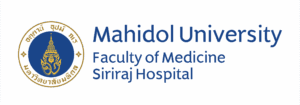Chief : Associate Professor Kongkhet Riansuwan, MD
Advisor : Professor Banchong Mahaisavariya, MD
Attending Staffs :
Assistant Professor Likit Rugpolmuang, MD
Assistant Professor Theerawoot Tharmviboonsri, MD
Instructor DirekTantigate, MD
Introduction
Orthopaedic trauma has been recognized as one of the major services since 1964 when the Department of Orthopeadic Surgery was officially established atSirirajHospital. In the past, most cases were treated by conservative means such as casting and splinting, including traction. For the surgical cases, most of the surgical procedures were open reduction and internal fixation. Treatment trend has changed over time and minimally invasive osteosynthesishas been more popular amongsurgeons in order to achieve a better outcome, especially after Professor BanchongMahaisavariya returned from KhonKaen University and joined the team in 1981. Since then, a lot of minimally invasive procedures particularly closed nailing has been introduced and many research projects investigatingorthopaedic trauma have been carried out. Recently, the service is well recognized as a subspecialty in orthopaedic surgery and there are totally 5 staff members who are experts in different aspects of this field.
Clinical service
There is a wide spectrum of cases who have been treated in the orthopedic trauma clinic, ranging from acute to chronic and from high energy trauma such as motor vehicle crash to low energy trauma such as osteoporotic fractures. Normally, we serviced more than 5000 out-patients and at least 750 cases of in-patients per fiscal year. Most of the surgical procedures are focusing on minimally invasive osteosynthesis and treatment of complications related to musculoskeletal injuries such as delayed and nonunion, malunion and deformity, and bone loss including posttraumatic degeneration of the joints.
Training
Training in this area includes both of under and postgraduate studies. Recently there are 320 medical students, 12 Residents and 3-5 fellows including guests from both of local institutions and aboard.
Research interest
- Minimally invasive osteosynthesis in both periarticular and disphyseal fractures
- Treatment of nonunion including implant failure
- High technology in orthopaedic surgery such as computer navigation and robotic surgery
- Biomechanical study and implant development
- Anatomical study especially implant-anatomy mismatching


